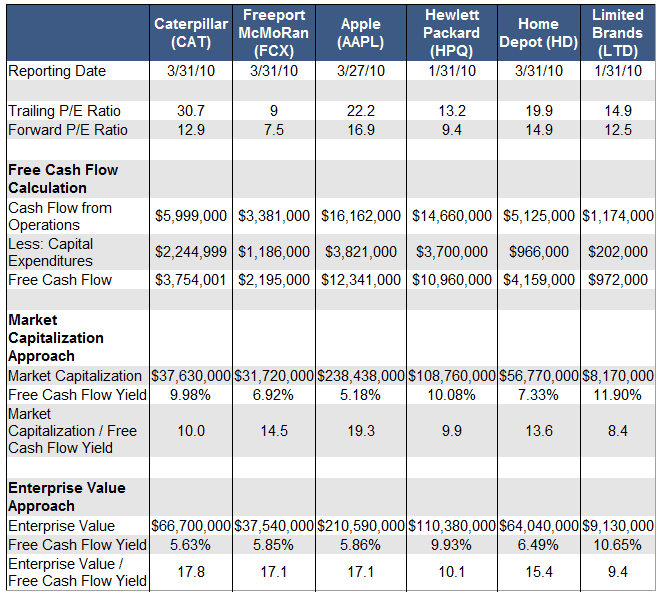If you're like most investors, you probably use the price-to-earnings ratio (P/E) to measure the value of a company. By dividing the market price by earnings, you can get an easy-to-understand measure of a firm's value and a simple way to compare different companies to each other.
Want a better indicator than the P/E ratio?
Calculating free cash flow relative to a company's valuation can be a better way to compare your alternatives. Add free cash flow indicators to your stock evaluation tool kit.
Cash flow, and especially free cash flow, is important to valuing a company. The price-to-free cash flow ratio (P/FCF), or its inverse, the free cash flow yield, is a great indicator when you know how to use it.
Calculating Free Cash Flow
Free cash flow alone won't help you value a company, but dividing free cash flow by company valuation gives you the free cash flow yield, and this number is an easy way to compare investment alternatives. You can use if much in the same way as you use earnings yield or dividend yield.
Fortunately, calculating the free cash flow yield is pretty straightforward. First, use the Cash flow statement to subtract capital expenditures from cash flow from operations.
Next, divide free cash flow by the value of the company, also known as its market capitalization.
The formula is Free Cash Flow Yield = Free Cash Flow / Market Capitalization.
The market cap of a publicly-traded company can be easily calculated by multiplying its share price by total shares outstanding. You can also find market capitalization pretty easily on sites like CNBC.com and Yahoo! Finance.
If you invert the calculation, it is comparable to the P/E ratio. And like the P/E ratio, the P/FCF ratio lets you compare different companies' ability to generate cash flow regardless of their size.
What about companies that use debt, especially a lot of it, to fund their business? If you use the company’s market capitalization to calculate your valuation ratio, you can end up with misleading information. In this case, a more sophisticated approach would be to use enterprise value (EV) as the divisor for the free cash flow yield calculation.
When a company uses a substantial amount of debt, EV offers a better measure of the value of a company because it includes the value of preferred shares, minority interest and cash.
The formula for enterprise value is EV = Market Capitalization + Total Debt + Preferred Stock - Cash
The table below shows the free cash flow calculations for six large, well-known companies from several industries.

Freeport McMoRan, a large mining company, sports a low P/E ratio, which on first analysis seems to indicate the company is a good buy. But when we calculate free cash flow, Freeport McMoRan doesn't look so good: free cash flow / free cash flow and EV / free cash flow both leap higher.
On the other hand, Limited Brands generates more free cash than one would expect by just looking at the company’s trailing and forward P/E ratios. Since cash in the bank is what we all want, it pays to look into the ability to generate cash of any company you have an interest.
Most mature companies are able to generate excess cash. Comparing free cash flow generated per market or enterprise value provides an excellent way to assess the value of several mature companies.
For growth companies who plow capital back into the business to fuel growth, there are a couple of other ways to use cash flow to assess future growth. But that is a subject another time.



